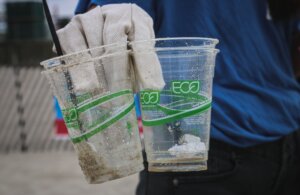Pic text: Plastic protects and preserves the freshness of a lot of fruit and vegetables. (Credit: Charles ?? on Unsplash)
According to an article on Theconversation.com there has been a surge in awareness of the damage that plastic pollution does to our planet in recent years. It has spurred a number of campaigns to remove single-use plastics from our daily lives. This extends to food packaging, with a Waitrose supermarket in the city of Oxford recently launching a package-free trial.
Many people bemoan the large amount of packaging that supermarkets use, particularly for fruit and vegetables, most of which have their own natural protection. Nonetheless, a major reason that supermarkets use so much packaging is to protect food and prevent waste – particularly with fresh food. Removing plastic entirely from our food supply may not be the best solution when it comes to protecting the environment and conserving valuable resources.
Food supply chains are complex networks with lots of parts. In Europe alone, 12m farms produce agricultural products which are processed by around 300,000 food and drink companies. These are then distributed by 2.8m food retailers and food services, serving around 500m consumers.
Food typically travels from the fields where it is produced to a storage facility for processing. It is then stored until it is needed. Then it’s packaged, transported and distributed to shops, where it is marketed, before being bought and consumed. This takes a varying amount of time, depending on where it is farmed and how long it stays in someone’s fridge or cupboard.
Plastic packaging is used in the food supply chain because it supports the safe distribution of food over long distances and minimises food waste by keeping food fresh for longer. A 2016 review of studies on food waste found that 88m tonnes of food is wasted every year in the EU – that’s 173kg per person and equals about 20% of food produced. Minimising this wastage is crucial for environmental protection, as well as food security.
Reducing waste
More than 50% of food waste takes place in households and nearly 20% is wasted during processing. Plastic packaging may be a necessary evil to reduce this high level of waste in both areas. A number of factors must be taken into account when determining how useful plastic packaging is in the food supply chain, as it has the potential to preserve food and prevent its wastage.
For example, the use of just 1.5g of plastic film for wrapping a cucumber can extend its shelf life from three days to 14 days and selling grapes in plastic bags or trays has reduced in-store wastage of grapes by 20%.










